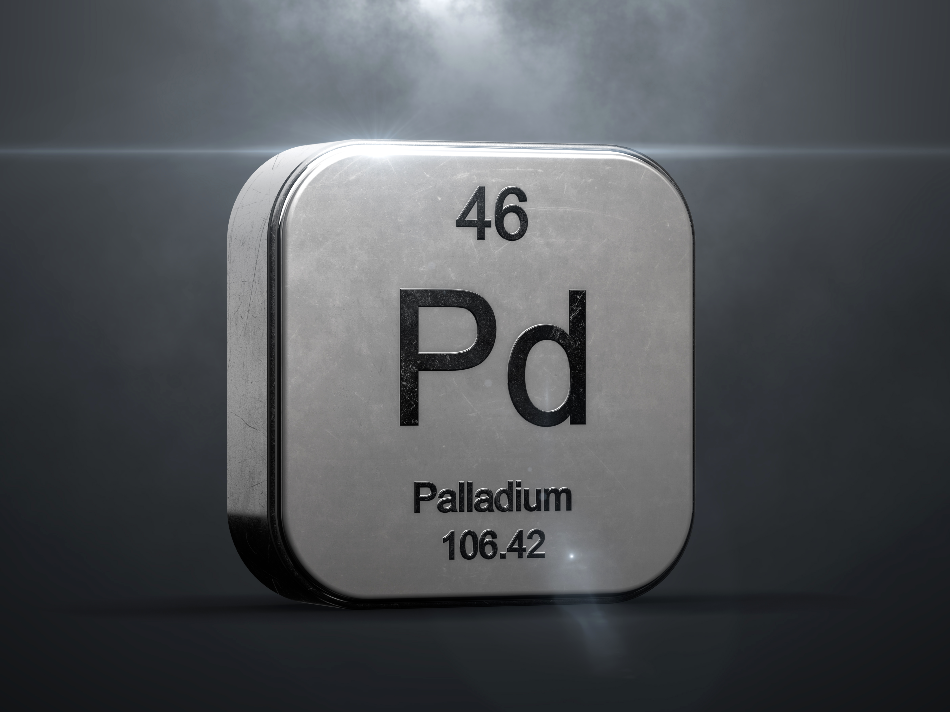Mar 28 2002

concept w / Shutterstock
In 1803, Wollaston discovered the palladium metal. It occurs along with other metals belonging to the platinum group in Placer deposits in Australia, Russia, Ethiopia, North America, and South America. In addition, it is also found in copper-nickel deposits in Ontario (Canada) and South Africa.
The possibility of separating palladium from other metals of the platinum group is largely dependent on the type of metals.
Key Properties
- Palladium is steel white in color
- The metal is soft and ductile in the annealed state
- It is vulnerable to nitric and sulfuric acids
- The metal does not corrode in air
- Palladium has the lowest density among all platinum group metals
- It has the lowest melting point compared to all platinum group metals
- It can absorb hydrogen up to 900 times its own volume
- Its strength and hardness are considerably increased by cold working
- Palladium can be utilized for hydrogen purification, as hydrogen easily diffuses through the heated metal
Applications
- Fine palladium powders are employed as catalysts for dehydrogenation and hydrogenation reactions
- Palladium alloys are used for making jewelry items, for example, white gold (gold decolorized by adding palladium)
- Watch-making
- Oxygen sensors
- Dentistry
- Surgical instruments
- Brazing alloys
- Electrical contacts
- Catalysts for auto applications
- Multilayer ceramic capacitors (MLCC)